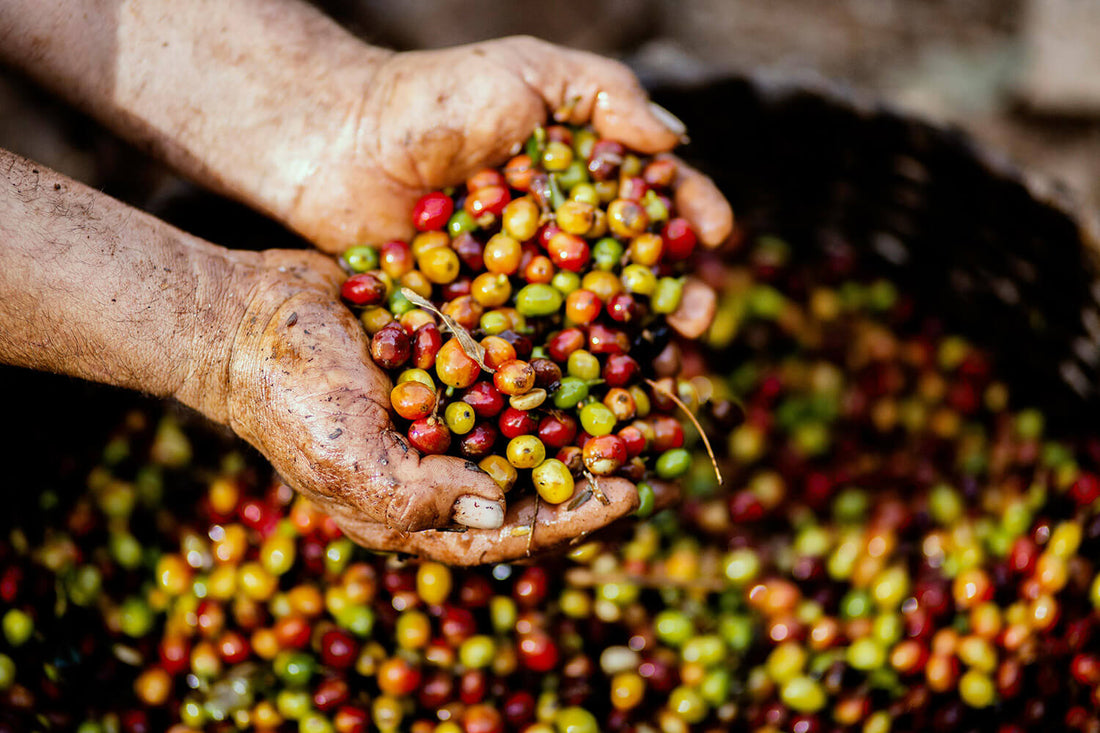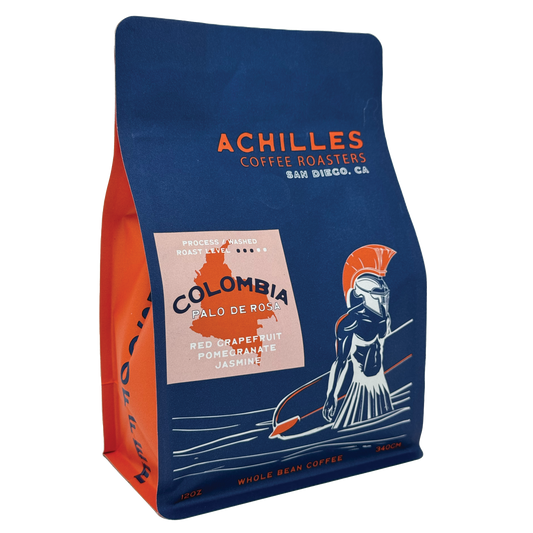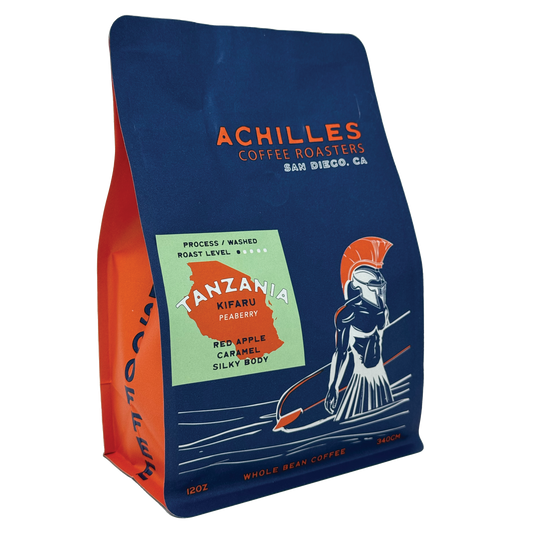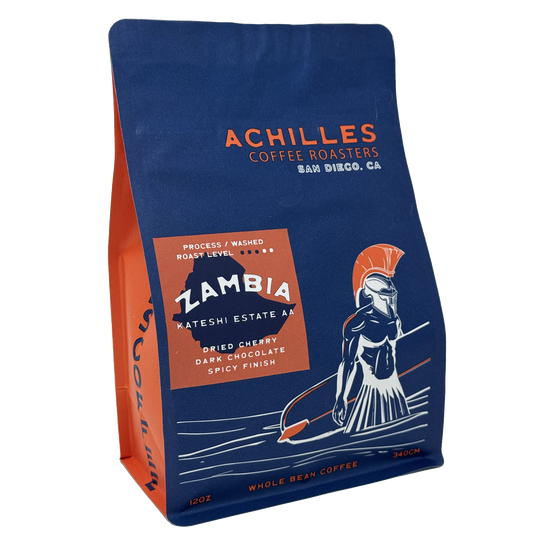Have you ever picked up a bag of coffee and seen tasting notes like “citrus,” “chocolate,” or “nutty” printed on the label—and wondered what exactly that means? These flavor descriptors may sound a bit mysterious at first, especially if you're new to the world of specialty coffee. But rest assured, they’re not marketing fluff or references to artificial flavorings. These notes are derived naturally from the coffee bean itself—shaped by a complex mix of factors like origin, altitude, variety, processing method, and roast profile.
In the world of specialty coffee, flavor notes serve as a flavor roadmap—helping you anticipate the experience you’ll have when brewing a cup. Much like how wine tasting notes describe fruity, earthy, or spicy undertones, coffee notes give you a preview of the aroma, taste, and mouthfeel waiting in the cup. For example, a coffee described as “citrusy” might have bright acidity and a clean finish, while “chocolatey” could signal smoothness and sweetness.
In this deep-dive guide, we’ll explore the most common tasting notes you’ll find on coffee bags—what they actually mean, why they appear in certain coffees, and how you can begin to identify them yourself. From the bright zing of lemon and orange to the smooth richness of dark cocoa and roasted nuts, learning to recognize these notes turns coffee drinking into a more intentional and enjoyable ritual. Whether you're a curious beginner or a seasoned enthusiast, understanding flavor notes will not only help you choose better coffee but also elevate your entire brewing and tasting experience.
Why Coffee Has Flavor Notes at All
Coffee is one of the most chemically complex beverages in the world—boasting more than 800 aromatic and flavor compounds, which is even more than what’s found in wine. This extraordinary complexity is what gives coffee its rich diversity of flavors and aromas, making it possible to detect tasting notes as varied as ripe berries, toasted almonds, jasmine flowers, brown sugar, citrus zest, or even hints of red wine.
These flavor compounds don’t appear randomly—they’re the result of a delicate interplay of factors throughout the coffee’s life cycle, from farm to cup. Here's how each stage influences the final taste:
-
Origin of the Bean: The geographical region where a coffee is grown significantly impacts its flavor. This includes altitude, soil composition, climate, and weather patterns. For instance, high-altitude coffees from Ethiopia often feature bright, floral, and citrusy notes, while beans from Brazil might lean toward chocolatey, nutty, and earthy flavors due to lower altitudes and different climate conditions.
-
Coffee Varietal: Just as different grape varieties produce different wines, coffee varietals—the specific genetic strains of coffee plants—can express unique flavor characteristics. Some are known for their fruitiness and complexity (like Geisha), while others might be prized for body, sweetness, or resilience in specific growing environments.
-
Processing Method: After harvesting, coffee beans undergo processing—the way the fruit is removed from the seed. This dramatically affects flavor.
-
Washed (wet) process coffees tend to be clean, bright, and acidic.
-
Natural (dry) process coffees often carry fruity, fermented, or jammy characteristics.
-
Honey process is a hybrid, offering a balance between clarity and sweetness.
-
Roast Level: Roasting transforms the chemical structure of coffee, unlocking aromatic oils and Maillard reaction products that contribute to flavor.
-
Light roasts preserve the bean’s origin character—think floral, fruity, or tea-like notes.
-
Medium roasts balance acidity and sweetness, bringing caramel, nuts, or chocolate to the forefront.
-
Dark roasts develop deeper flavors like smoke, spice, and bittersweet cocoa, often with lower acidity.
-
Brewing Method: Finally, how you brew your coffee influences which flavor compounds are extracted. A pour-over highlights brightness and clarity, a French press emphasizes body and richness, while espresso condenses the flavor into a bold, syrupy shot that can highlight chocolate, caramel, or nutty notes.
When all these elements come together, they result in a coffee that can be incredibly nuanced and expressive. Tasting notes are simply a way to describe these subtle nuances in an accessible, relatable way—offering a sensory preview of what’s to come, and helping coffee lovers select beans that match their preferences.
Are Flavors Added to Coffee?
Are These Flavors Actually Added to the Coffee
Short answer: No. Unless you're specifically buying artificially flavored coffee—such as hazelnut, French vanilla, or pumpkin spice—the tasting notes you see on the bag are naturally occurring and not the result of added ingredients or flavorings.
When you read a label that says “blueberry,” “toffee,” or “citrus,” it doesn’t mean those ingredients were mixed into the beans. Rather, these flavor descriptors are the result of aromatic compounds that are already present in the coffee bean due to its variety, origin, processing, and roast level. During roasting, these compounds are transformed and unlocked, becoming detectable to our senses in the form of aroma and taste.
This is similar to how a wine might be described as having flavors of blackberry, tobacco, or vanilla. No actual blackberries or vanilla pods are floating in the wine—those are just sensory impressions that the drink evokes in the taster due to complex chemical reactions between grapes, fermentation, and aging in oak barrels.
Coffee tasting works the same way. For example:
-
A natural-processed Ethiopian coffee might evoke blueberry or jasmine notes due to the fruit sugars fermenting in the sun.
-
A washed Colombian bean might give off citrus and caramel characteristics thanks to its bright acidity and clean processing.
-
A medium-roasted Guatemalan coffee may suggest chocolate and almond, purely based on how the sugars and proteins in the bean develop during roasting.
These tasting notes are a guide, not a guarantee—what you perceive may differ depending on your palate, brewing method, water quality, and even your mood. But they offer an exciting window into the natural flavor complexity that high-quality coffee can offer—without any syrups, extracts, or additives.
The Coffee Flavor Wheel: A Tool for Training Your Palate
How Professionals Identify and Describe Coffee Flavors
Professional coffee tasters—called Q Graders—are certified experts trained to evaluate coffee quality through a process called cupping. Much like sommeliers in the wine world, Q Graders use standardized tools and language to identify a coffee's aroma, flavor, body, and acidity. One of their most important tools is the Coffee Taster’s Flavor Wheel, developed by the Specialty Coffee Association (SCA) in collaboration with World Coffee Research.
This colorful, circular chart acts as a sensory roadmap, helping tasters pinpoint and articulate the complex range of flavors present in high-quality coffee. The wheel begins with broad categories and narrows down to more specific descriptors as your palate becomes more refined. Understanding this wheel can also be incredibly useful for everyday coffee drinkers who want to explore and communicate what they taste more clearly.
Here’s a breakdown of some of the primary flavor categories on the wheel:
-
Fruity – These notes often come from lighter roasts or naturally processed beans and include flavors like:
-
Citrus (lemon, lime, orange, grapefruit)
-
Berry (strawberry, blueberry, raspberry)
-
Dried fruit (raisin, prune)
-
Tropical fruit (pineapple, mango)
-
Floral – Common in lightly roasted, high-altitude coffees, especially from East Africa:
-
Jasmine, rose, hibiscus
-
Sweet – These notes often stem from the caramelization of natural sugars during roasting:
-
Caramel, honey, brown sugar, vanilla
-
Nutty/Chocolatey – Found in medium and darker roasts, particularly Central and South American coffees:
-
Almond, hazelnut, walnut, cocoa, milk chocolate, dark chocolate
-
Spices – More common in complex, spiced coffees or certain aged beans:
-
Cinnamon, clove, pepper, anise
-
Sour/Fermented – Usually associated with overripe or experimental processing methods:
-
Lactic acid, yogurt, vinegar, wine-like
-
Roasted – These flavors become more prominent in dark roasts:
-
Burnt sugar, toast, tobacco, smoke
-
Other – Includes less desirable or controversial flavors, often tied to defects or unique processing:
-
Papery, earthy, musty, rubbery
Understanding and practicing with the flavor wheel helps tasters develop a shared vocabulary, enabling consistent communication across the global coffee industry. It’s also a fantastic way for consumers to explore their own taste preferences more confidently and critically.
1. Citrus: Bright, Tangy, and Zesty
What It Means
When a coffee is described as having citrus notes, it generally refers to a lively, bright flavor profile with noticeable acidity—not to be confused with sourness. This acidity adds vibrancy and complexity to the cup, often making the coffee feel crisp, clean, and refreshing. Common citrus notes include lemon, lime, orange, and grapefruit. These aren’t artificial flavors; they’re natural characteristics created by the coffee’s chemistry and how it was grown, processed, and roasted.
Where It Comes From
Citrus notes are especially common in high-elevation, washed-process coffees from Africa, particularly:
-
Ethiopia (Yirgacheffe, Sidamo, Guji)
-
Kenya (noted for blackcurrant and grapefruit-like acidity)
Several key factors contribute to citrus-forward profiles:
-
High Altitude (over 1,800m above sea level)
At higher elevations, coffee cherries mature more slowly, developing denser beans with more complex acids and sugars. This leads to the bright, acidic flavors often associated with citrus fruits. -
Washed (Wet) Processing
This method uses water to remove the fruit from the bean before drying. It tends to emphasize clarity and brightness, bringing citrus and floral notes to the forefront. -
Light Roasting
Lighter roasts preserve more of the bean’s natural acidity and delicate volatile compounds. Roasting too dark can flatten or burn off these citrus characteristics.
What It Tastes Like
Different citrus notes can show up in different ways:
-
Lemon Zest – Clean, sharp, and invigorating; often found in washed Ethiopian coffees. Think of the brightness of lemonade without the sweetness.
-
Grapefruit – Juicy with a subtle bitterness and a dry finish. A hallmark of many Kenyan coffees.
-
Orange Peel – Sweet and tart, often slightly bitter. Found in Central American coffees, sometimes alongside spice notes.
-
Lime – A more acidic, sharper twist than lemon; often adds a mouth-puckering zing.
These notes aren’t always obvious at first, but they’re part of what makes some coffees feel "sparkly" or "vibrant."
Best Brew Methods
The clarity and nuance of citrus notes are best expressed through manual brewing methods that highlight acidity and aroma:
-
Pour-over (Hario V60, Kalita Wave) – Gives you control over extraction, making it easier to highlight citrus complexity.
-
Chemex – Produces a clean, crisp cup with enhanced brightness and less body, perfect for citrus-forward coffees.
-
Aeropress – Can be fine-tuned to bring out bright acidity while maintaining a fuller mouthfeel if desired.
Try If You Like
Citrus-forward coffees tend to appeal to people who enjoy:
-
Fruity or floral teas (e.g., Earl Grey, chamomile with lemon)
-
White wines like Sauvignon Blanc or Riesling, which often carry notes of lime, lemon, or green apple
-
Tart desserts such as lemon bars, key lime pie, or citrus sorbets
If you like a zesty edge in your beverages, citrusy coffee could become your new favorite morning ritual.
How to Train Your Palate
Developing your ability to detect citrus flavors takes practice, but it's accessible to anyone:
-
Side-by-Side Sensory Training
Try this: Sip a small amount of lemon juice, orange juice, or grapefruit juice, then smell freshly ground coffee beans. Pay attention to how your nose and tongue interpret the aromas and flavors. -
Sip and Sense
When tasting a citrus-forward coffee, pause between sips. Notice where the acidity hits your tongue—citrus-like acidity often activates the front and sides of your tongue. -
Cupping Practice
Participate in a cupping session or create your own at home. Taste several coffees with citrus descriptors side-by-side, and compare them with real citrus fruits nearby.
Mastering citrus flavor recognition will not only enhance your enjoyment of specific coffee origins but also help you identify freshness, roast level, and processing methods with more confidence. Stay tuned as we dive into two other common tasting profiles—chocolatey and nutty—to further refine your coffee-tasting vocabulary.
2. Chocolate: Rich, Sweet, and Comforting
Flavor Note: Chocolate
What It Means
When a coffee is described as having chocolate notes, it refers to a rich, smooth flavor profile that evokes the comforting taste of cocoa, milk chocolate, or dark chocolate. These notes often create a sense of sweetness, warmth, and roundness, with a mouthfeel that can range from silky to velvety. Chocolatey coffees are typically less acidic, offering a more grounded, balanced experience—making them ideal for drinkers who enjoy a mellow yet satisfying cup.
Chocolate notes may not always taste exactly like a candy bar, but they evoke the same essence—a bittersweet, roasted, and slightly creamy character that feels familiar and indulgent.
Where It Comes From
Chocolate flavors are most commonly found in coffees from Latin America, including:
-
Brazil – Known for nutty, chocolatey, low-acid profiles; often a base for espresso blends
-
Colombia – Offers a wide range, but many regional coffees show cocoa and caramel tones
-
Guatemala – Especially from regions like Huehuetenango and Antigua; chocolate notes often combine with spice
-
Honduras – Mellow chocolate profiles are common, sometimes layered with stone fruit or caramel
They are also typical of:
-
Medium to dark roasts – As coffee roasts darker, Maillard reactions (a kind of browning process) enhance chocolate, toasted, and caramelized flavors
-
Blends – Many roasters craft blends with chocolate notes because they add depth, sweetness, and balance, particularly for milk-based espresso drinks
What It Tastes Like
Chocolate in coffee isn’t one-size-fits-all. It varies based on roast, origin, and brew method:
-
Milk chocolate – Smooth, mellow, and creamy with subtle sweetness. You might find this in Colombian or Guatemalan medium roasts
-
Dark chocolate – Richer, more intense, with a hint of bitterness. Often found in Brazilian or darker-roasted blends
-
Cocoa powder – Dry and slightly chalky, with a lingering finish reminiscent of baking cocoa. Frequently shows up in natural-processed coffees
-
Mocha-like – When paired with hints of fruit or caramel, some coffees may resemble a mocha dessert without the sugar
Best Brew Methods
Chocolatey notes are enhanced by brew methods that emphasize body and sweetness:
-
French press – The metal filter allows coffee oils to pass through, producing a rich, full-bodied cup that enhances chocolate notes
-
Drip machine – A reliable method that brings out rounded flavors and subtle cocoa sweetness
-
Espresso – Perfect for highlighting dark chocolate flavors, especially in blends designed for espresso. Pairs beautifully with steamed milk for lattes and cappuccinos
Try If You Like
Chocolate-forward coffees are perfect for those who enjoy:
-
Hot cocoa or chocolate milk
-
Mocha drinks (espresso with chocolate syrup or powder)
-
Chocolate desserts, such as brownies, chocolate cake, or chocolate chip cookies
-
Dark beers, like stouts or porters, which often carry roasted cocoa flavors
If you crave a cozy, familiar profile with sweetness and richness, chocolatey coffees are a great go-to.
How to Train Your Palate
Identifying chocolate notes is a great entry point into flavor recognition because it's so familiar to most people. Here’s how to enhance your skills:
-
Taste a Variety of Chocolates
Line up samples of: -
Milk chocolate
-
Bittersweet chocolate
-
Unsweetened cocoa nibs
-
70–90% dark chocolate bars
-
Take small bites and let them melt on your tongue. Pay attention to the bitterness, creaminess, and mouthfeel.
-
Pair with Coffee
Brew a chocolate-forward coffee and sip it immediately after tasting chocolate. Compare how each element shows up—bitterness, sweetness, and texture. -
Focus on Mouthfeel
Chocolatey coffees often have a round or velvety mouthfeel. Try to sense how the coffee “sits” on your tongue—does it feel soft, thick, smooth, or dry? -
Note Temperature Changes
Chocolate flavors in coffee tend to become more pronounced as the cup cools. Sip it over 10 to 15 minutes and see how the profile evolves.
3. Nutty: Smooth, Earthy, and Toasted
Flavor Note: Nutty
What It Means
When coffee is described as having nutty notes, it evokes flavors reminiscent of various nuts such as almonds, hazelnuts, peanuts, or cashews. These flavors tend to be dry, mildly sweet, and comforting, often contributing a warm, rounded character to the cup. Nutty coffees typically carry a smooth mouthfeel with subtle earthiness and toasted qualities, making them approachable and enjoyable for a wide range of palates.
Nutty notes are less about sharpness or brightness and more about smooth, mellow flavors that provide a satisfying depth without overwhelming acidity or bitterness. This makes nutty coffees particularly popular for those who prefer balanced, comforting brews that pair well with milk or cream.
Where It Comes From
Nutty characteristics are often found in:
-
Brazilian Coffees: Brazil is the largest coffee producer globally, and many of its beans carry natural nutty and chocolate undertones, especially those grown at lower altitudes and processed using natural or semi-washed methods.
-
Blends and Medium Roasts: Nutty flavors frequently emerge in medium roast profiles and blends, where the roasting process enhances caramelization and Maillard reactions that bring out toasty, nut-like sweetness.
-
Processing Methods: Coffees processed with natural or semi-washed techniques can accentuate nutty and earthy qualities by allowing sugars and oils to remain on the bean longer before drying.
-
Other Origins: While Brazil is a classic example, coffees from parts of Central America and India can also exhibit nutty notes, especially when roasted medium or dark.
What It Tastes Like
Nutty flavor profiles in coffee vary based on the specific nut flavor and roasting level:
-
Almond: Mild and dry with a subtle sweetness, reminiscent of toasted almond slices. This note tends to be light and delicate.
-
Hazelnut: Rich and buttery, often evoking the creamy, slightly sweet flavor of roasted hazelnuts or hazelnut spreads.
-
Peanut Butter: Creamy and earthy, offering a denser mouthfeel and a savory-sweet balance that can feel comforting and familiar.
-
Cashew: Soft, smooth, and subtly sweet, cashew notes add a gentle richness without overpowering the palate.
-
Roasted Nuts: A broad category encompassing the warm, toasty, and slightly caramelized qualities that develop as nuts—and coffee beans—are roasted.
Best Brew Methods
Certain brewing methods enhance nutty notes by emphasizing body, sweetness, and mouthfeel:
-
Moka Pot: This stovetop espresso maker extracts a bold, concentrated coffee with a strong body, which highlights the warm, roasted qualities of nutty beans.
-
Cold Brew: Slow steeping in cold water draws out smooth, mellow flavors, softening acidity and allowing nutty sweetness to shine through.
-
Drip Machine: A classic brew method that extracts a balanced cup, bringing out the round, comforting flavors associated with nutty coffees.
-
French Press: The full immersion and metal filter preserve oils and fine particles, intensifying nutty and toasty elements.
Try If You Like
Nutty coffees pair wonderfully with flavors and foods that highlight similar profiles:
-
Nut-flavored cereals or granola, which combine crunch and sweetness
-
Roasted nuts, such as almonds, hazelnuts, or peanuts
-
Nutty desserts like almond biscotti, pecan pie, or peanut butter cookies
-
Buttery pastries and mild cheeses
These pairings can enhance your tasting experience and help reinforce nutty flavor recognition.
How to Train Your Palate
Developing sensitivity to nutty coffee notes is both fun and rewarding. Here are some palate-training tips:
-
Taste Plain Roasted Nuts
Sample almonds, hazelnuts, peanuts, or cashews on their own. Focus on their textures, sweetness levels, and lingering flavors. -
Sip Coffee Alongside Nuts
While tasting coffee, chew or hold a small piece of roasted nut in your mouth to compare sensations. Notice similarities in dryness, creaminess, or toasted flavors. -
Practice Mindful Tasting
Let the coffee sit on your tongue for several seconds before swallowing. Try to isolate nutty components from other flavor notes like fruit or chocolate. -
Record Your Impressions
Keep a tasting journal to note when you detect nutty flavors. Over time, you’ll build a more nuanced understanding of how nuts manifest in different coffees.
Other Popular Notes to Explore
While citrus, chocolate, and nutty are among the most commonly recognized coffee flavor notes, the world of specialty coffee is incredibly diverse and offers a surprising range of additional flavors that can delight and intrigue your palate. Many specialty coffees showcase unique flavor profiles that reflect their origin, processing, and roast style—flavors that might be unexpected but add layers of complexity and enjoyment to your cup.
Berry
Berry notes such as blueberry, raspberry, or strawberry are frequently found in natural-processed coffees, especially from Ethiopia. The natural processing method—where coffee cherries are dried whole with the fruit still attached—can enhance fruity characteristics, lending a juicy sweetness and vibrant brightness reminiscent of fresh berries. These coffees often have a wine-like quality with a lively acidity and rich, complex layers of fruit flavor that evolve as the coffee cools.
Floral
Floral notes like jasmine, rose, or even lavender often appear in light-roast African coffees and prized varieties such as Panama Geisha. These aromas are delicate and fragrant, adding an elegant softness and brightness to the coffee’s profile. Floral coffees tend to have a lighter body and crisp finish, making them favorites among those who appreciate nuanced, aromatic brews that evoke a garden-like freshness.
Spice
Spicy notes such as cinnamon, clove, nutmeg, or even black pepper can be present in both light and dark roasts. In lighter roasts, these spices may be subtle and aromatic, complementing fruit and floral flavors. In darker roasts, spice notes can take on a deeper, warmer character, adding complexity and warmth to the coffee. These flavors are often found in coffees from regions like Indonesia, India, and certain parts of Central and South America.
Caramel and Toffee
Caramel and toffee notes are warm, sweet flavors commonly found in medium roasts, particularly those sourced from Central America. These notes develop through the roasting process as sugars caramelize, giving the coffee a rich sweetness with buttery or molasses-like undertones. Caramel and toffee add a comforting depth to the cup, often balancing bright acidity with a smooth, lingering finish.
Tropical Fruit
Tropical fruit flavors such as pineapple, mango, passionfruit, or guava frequently appear in bright, juicy coffees from regions like Kenya, Colombia, or parts of Central America. These notes bring a refreshing vibrancy and sweetness to the coffee, often accompanied by crisp acidity and a lively, effervescent mouthfeel. Tropical fruit flavors can add a dynamic and exotic element to your coffee experience, especially when paired with light or medium roasts that preserve their brightness.
These additional flavor notes reflect just a small sample of the incredible diversity coffee offers. By exploring coffees with varied origins, processing methods, and roast levels, you can discover new and exciting flavor experiences beyond the familiar citrus, chocolate, and nutty categories. Developing your palate to recognize these subtleties not only enhances your appreciation but also guides you in selecting coffees that perfectly suit your taste preferences.
Why Learning Flavor Notes Matters
Understanding tasting notes allows you to:
-
Choose coffee you’ll enjoy more often
-
Describe what you like or dislike more clearly
-
Experiment more intentionally with brew methods and origins
-
Support roasters that focus on transparency and traceability
-
Train your palate and deepen your appreciation for coffee as a culinary experience
It also connects you to the people and places behind each cup. Noticing that a coffee from Yirgacheffe tastes like bergamot or lavender isn’t just trivia—it’s a reflection of the soil, altitude, and care taken by producers thousands of miles away.
Final Tips for Developing Your Palate
-
Slow down your coffee routine. Sip thoughtfully and pay attention to aroma, flavor, and finish.
-
Compare coffees side by side. Brew two types and notice how they differ.
-
Keep a tasting journal. Write down your impressions even if you’re not sure—your vocabulary will improve with time.
-
Train with common foods. Fruits, chocolates, nuts, and spices are excellent references.
-
Trust your senses. Everyone tastes differently. You might taste cherry where someone else tastes plum—and that’s okay.
Conclusion
Tasting notes like “citrus,” “chocolate,” and “nutty” aren’t just fancy words on a label—they’re a gateway to understanding the incredible diversity in coffee. They invite you to slow down, savor, and engage with your brew in a more meaningful way. The next time you try a new coffee, challenge yourself to find those flavor notes. You might be surprised by what your palate can detect.
Ready to explore? Pick up a single-origin light roast for your pour-over or a chocolatey Brazilian blend for your French press—and let your taste buds guide the way.








